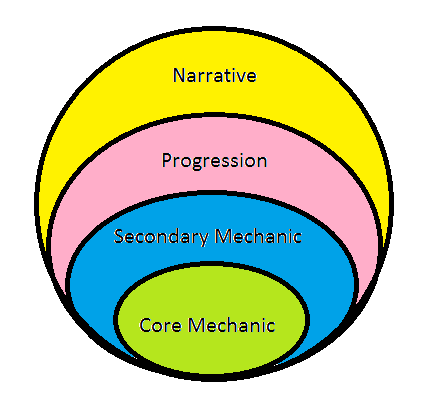It was with a spring in our step that we came to university this week, elated after having submitted our first assignments. As Ashley identified, the essay had been a bonding experience for our group and, in addition to feeling relieved that it was now over, we also glowed from our increased camaraderie. Our student rep, Naila, had bought in an assortment of chocolatey delights as a way of celebrating the completion of our first MA milestone and so we spent a good deal of the day stuffing our faces. I feel incredibly grateful to be a part of the MA group I’m with and to be surrounded by people so intelligent, interesting, witty and warm. I’m a lucky man.
Film was the focus of this week’s concepts component where we explored how the application of film theory to games can prove useful, as well as problematic. Indeed, some scholars feel that video games must shy away from film theory so that games may escape the gargantuan shadow of cinema; however, as Kelly reminded us, one mustn’t be so quick to ‘throw the baby out with the bath water’: there is still much that can be gained from comparing the two media.
A particular point of interest came for me in our discussion of full motion video (FMV) cut-scenes that were popular in games during the 1990s. Speaking of the game Wing Commandar III, games scholar, Will Brooker, describes how the FMV cut-scenes (starring Mark Hamill and Malcolm McDowell) reportedly disrupted players’ sense of immersion. So while it might be assumed that the mirroring of games and cinema increases player immersion, the opposite is true. I was intrigued as to why this might be and was met with some interesting theories when I posed the question. Kelly explained how, in the case of Wing Commandar III, a player’s associations with the actors Mark Hamill and Malcolm McDowell could disrupt their suspension of disbelief since a player might have trouble separating the actors’ Hollywood identities from their character identities. Davide also pointed out that if polygons are used as a means of establishing ‘reality’ in the levels and film footage is used to establish ‘reality’ in cut-scenes, the disjuncture caused by this might be discombobulating for a player. It was an interesting discussion that provided food for thought regarding the successful merging of games and cinema.
In our games design component this week, we looked at core mechanics in video games: the main rules that a player interacts with, frequently, throughout a game. The core mechanic in Super Mario Bros., for example, would be jumping since this is the key action a player needs to take in order to progress through the levels. Chris shared with us an interesting diagram, entitled the Petal Method, which demonstrates a possible way to think about game design:

He explained that it could be interpreted in the following way: firstly, a designer decides upon a core mechanic she wishes to implement; she then considers what secondary mechanics might complement this core mechanic; after this, she decides how the core and secondary mechanics will affect the design of levels/missions; finally, she decides upon a story that would suit the mechanics and levels that have been designed. Chris acknowledged that in addition to designing games this way, one could go about designing games in the opposite direction, too: starting with the story and then working towards a core mechanic. I really liked this way of thinking about games design since it stresses the importance of the mechanics and the narrative being interlinked. Too often, I’m tempted to prioritise narrative and overlook mechanics; however, I appreciate that it’s only through intelligent interweaving of mechanics/narrative that a game can be truly outstanding. Consequently, I’m eager to challenge myself by using the Petal Method in future design challenges.
Speaking of narrative, I’ll sign off now as I’m off to AdventureX today: a convention dedicated to narrative-driven gaming. I can’t wait since two of my heroes will be there: Charles Cecil and Rhianna Pratchett! I’m really hoping to catch their talks as it’d be brilliant to hear them chat and get a glimpse into their minds. Fingers crossed!
